Throwback Thursday: What should we build after the LHC?

The most powerful accelerator in the world found the Higgs, but might not find anything else. What should come next?
“It is no good to try to stop knowledge from going forward. Ignorance is never better than knowledge.” –Enrico Fermi
As you probably know, the Large Hadron Collider — site of discovery of the last fundamental particle in the Standard Model, the Higgs Boson — is the most energetic particle accelerator in the history of humankind. It was shut down for more than a year as they upgraded the machine, and it now collides protons head-on with other protons at a total collision energy of 13 TeV, the most energetic collisions ever manufactured by humans on Earth.
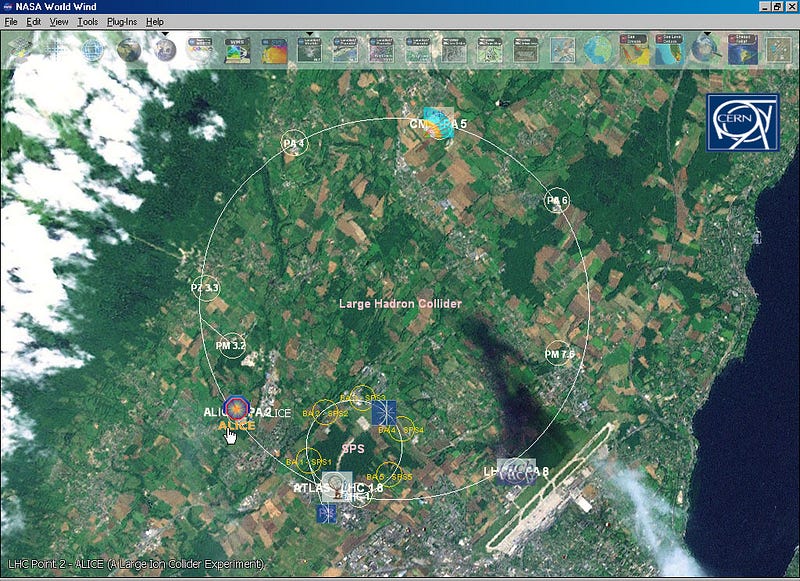
The way this happens is that protons are circulated in a giant ring, underground, that’s 26 kilometers in circumference, or with a radius of about 4.3 km. A chamber inside the ring is completely evacuated, and high-energy protons are injected in either direction.
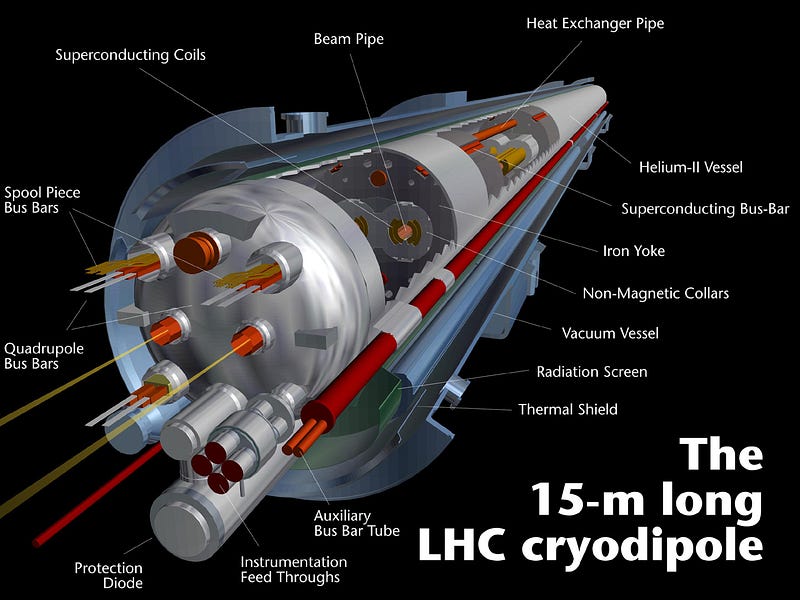
Inside, the most powerful, mass-produced electromagnets ever built are cooled down to just a couple of degrees above absolute zero using liquid helium, so that they superconduct, in order to do two things:
- Accelerate the protons when they pass by, giving them a “kick” with an electric field to make them move faster along the direction-of-travel, and
- Bend the protons into a circular path, adjusting the electromagnet at every turn to provide just the right magnetic field to prevent the protons from crashing into either the inside or outside of the circular track.
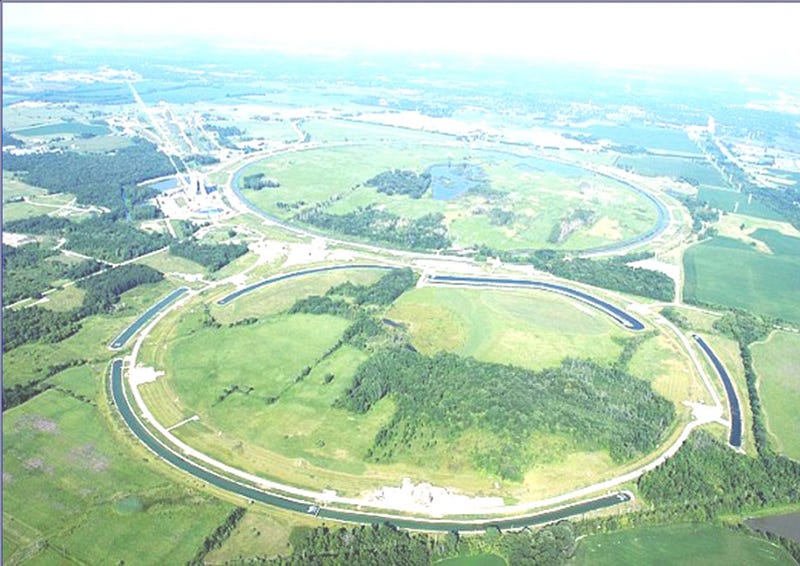
The old, Pre-LHC record, for those of you keeping score, was held by Fermilab in the United States, which was only about 6.3 km in circumference, or 1 km in radius. Fermilab — which has its own remarkable history — also used slightly older electromagnet technology (as its heyday was in the 1990s), and so achieved a maximum energy of only 1.96 TeV, colliding proton and anti-proton beams each at an energy of 0.98 TeV.

You might wonder why these circular accelerators use protons (and possibly antiprotons) instead of electrons (and possibly positrons) for their collisions. After all, unlike protons — which are composite particles made up of quarks and gluons — electrons are single particles, and not only produce cleaner signals which are easier to detect, but also can provide all of their kinetic energy for new particle creation, as opposed to protons which typically have most of their kinetic energy go into the non-colliding particle constituents?
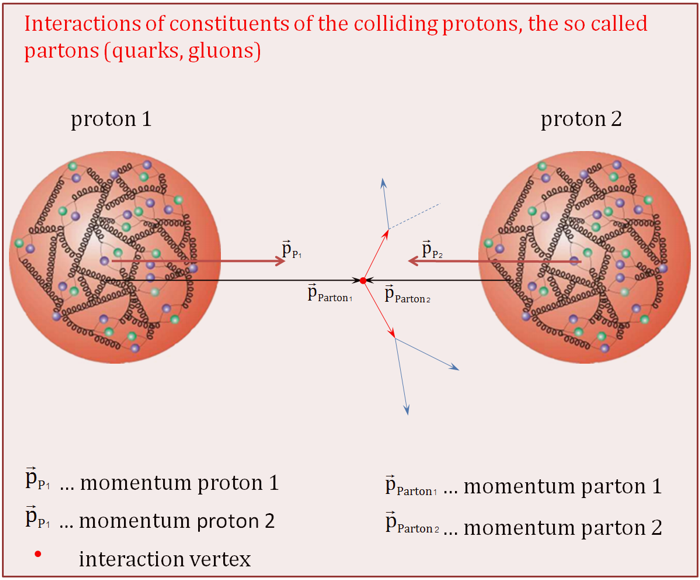
It’s a good question! The problem is that charged particles moving in a magnetic field emit radiation. Typically, the speeds of these particles are so small compared to the particle’s mass that this radiation — known as synchrotron radiation — is negligible. But an electron is 1836 times lighter than a proton, and has the same charge, and synchrotron radiation is dependent on a particles charge-to-mass ratio to the fourth power. Know what (1836)^4 is?
It’s freakin’ huge! It’s about 10^13, or 10,000,000,000,000. And that’s enough to severely limit what you can do with an electron in a circle, which is why the energy record for circular accelerators goes to protons and anti-protons.
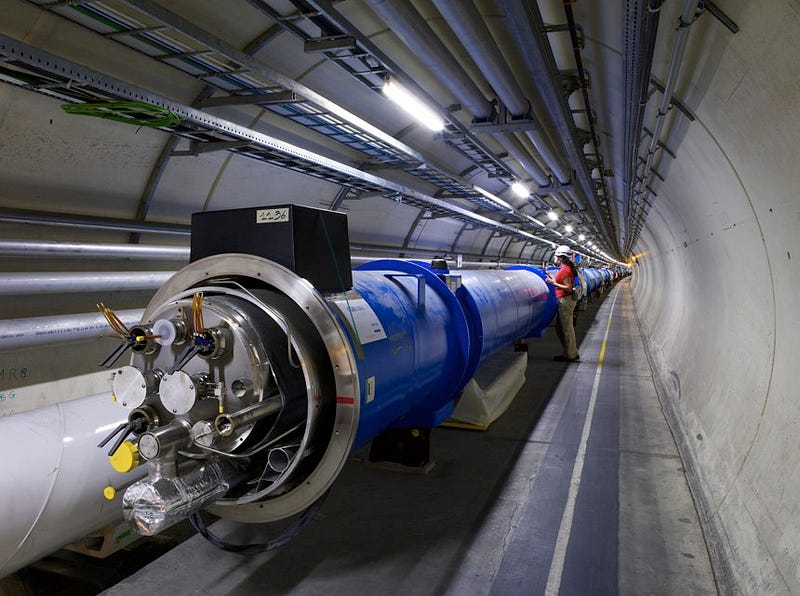
Quite simply, more energy means more potential for new discoveries. If a top quark has a mass of 175 GeV (in natural units), then you’ve got to have at least 175 GeV available to create new particles. In theory, the LHC could create particles up to about 13 TeV in energy; in practice, it will create detectable particles up to about 1,000–2,500 GeV (or 1.0–2.5 TeV) in energy.
But if it doesn’t see anything beyond the known particles in the Standard Model, that’s going to be particularly troubling for most theorists and model-builders.
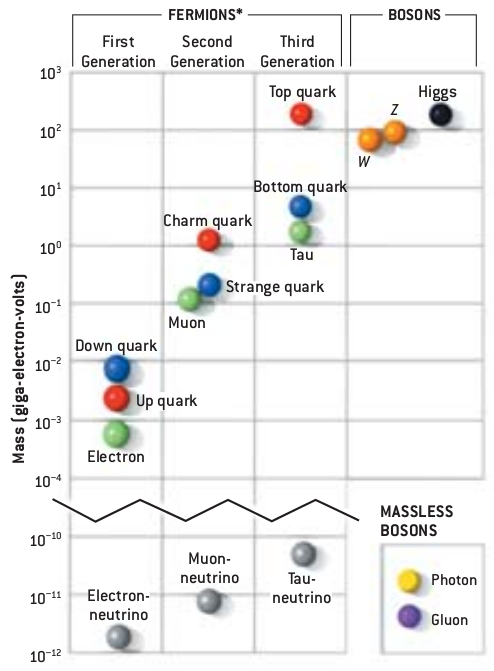
We expect there to be more to the Universe than what we’ve already discovered, and the real hope of the LHC is that it wouldn’t just find the Higgs. Rather, we’d hope it would find something unexpected, unanticipated, that was a sign of new physics, and potentially things to come. Finding nothing new would be, to say the least, bothersome.
But what’s really bothersome is that there are no ambitious plans to go to higher energies in the near-term future. Money, funding, and political constraints are the prime reasons for this, and so the next plan is for an ILC, or an international linear collider. Linear colliders are where the electron/positron setup shines, because there’s no synchrotron radiation to worry about if you don’t need to bend your particles into a ring. And they do allow high-precision studies up to the energies they do reach; so long as they reach ~180 GeV, they’ll be able to study every known particle in detail.
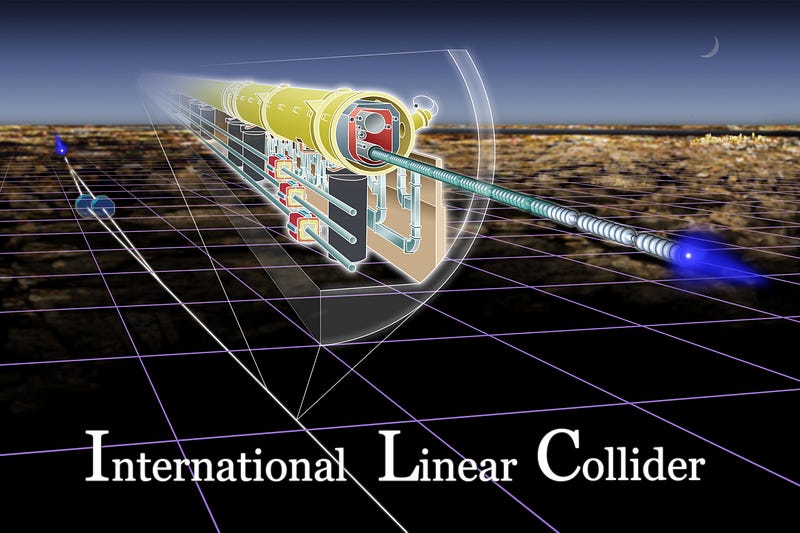
But, like many of you, I dream of something new.
I dream of pushing the energy frontier.
And when I dream, I dream big.
So imagine it with me: the most powerful particle accelerator you can think up.
Okay, wait, back up a bit. What are we imagining here? What does it look like? And why?
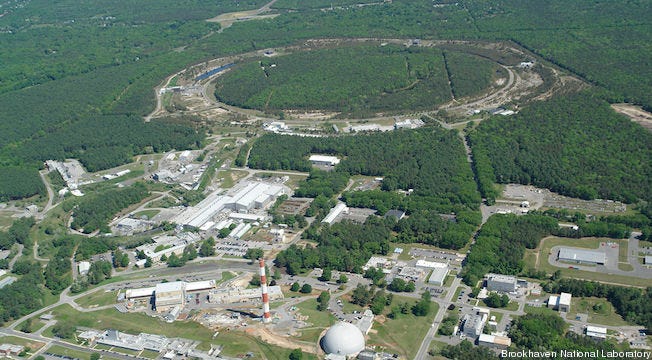
If you want to reach the maximum energy possible, you accelerate protons in a circle. And if you engineer it perfectly, there are only two factors that determine how energetic your beam is going to be: the strength of your circularly-bending magnetic field (determined by the dipole magnet strength), which topped out at about 4.5 Tesla at Fermilab, and which will peak at about 8.3 Tesla at the Large Hadron Collider, and the radius of your circle.
That’s it.
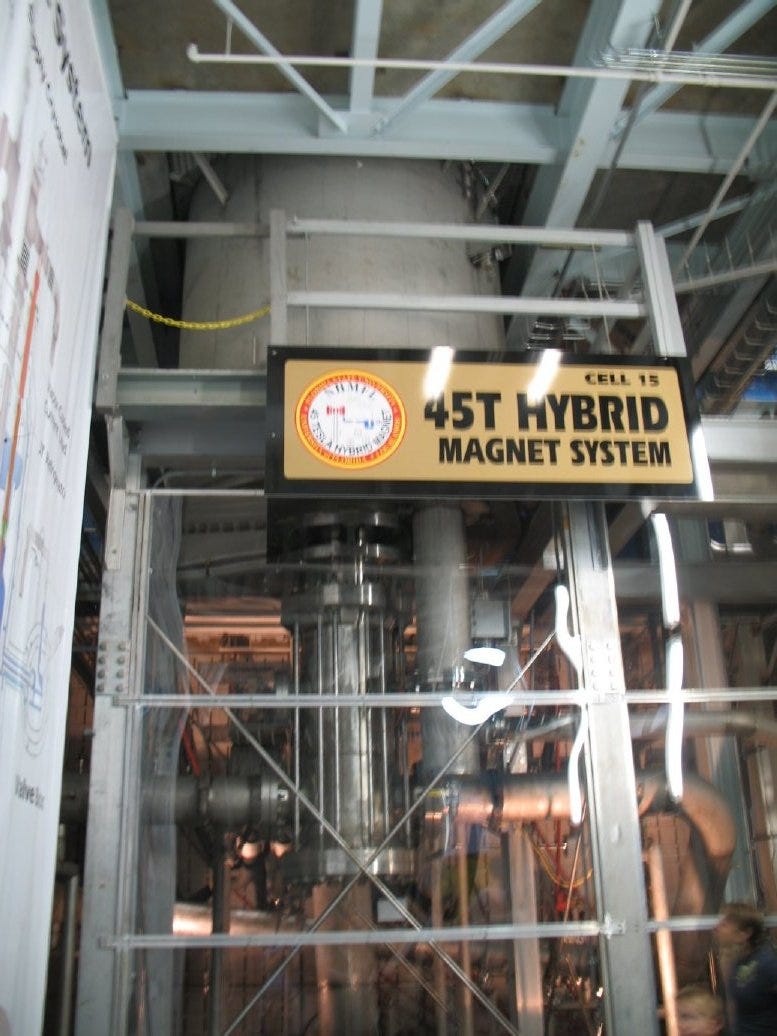
So electromagnet technology continues to improve. In 2010, we made it all the way to 36 Tesla in an electromagnet, and a tweaking of the technique got it all the way up to a sustained 45 Tesla. These field strengths aren’t quite achievable for large-scale implementation yet, but could someday be. But none of this is easy to control; magnet technology develops at the pace it develops at, and that’s not something we, as humans, are in total control over.
But you know what you can control? Size. The bigger you build your accelerator, the faster your protons go. And like I said, when I dream, I dream big.

The ultimate dream machine of the particle physics community is known as the Fermitron, an accelerator that either goes around the circumference of the Earth or exists in a stable orbit around it. This would obviously require a huge amount of engineering, sustained investment, and international cooperation. But the radius of the Earth is, on average, 6,371 km, or about 1,500 times the radius of the Large Hadron Collider.
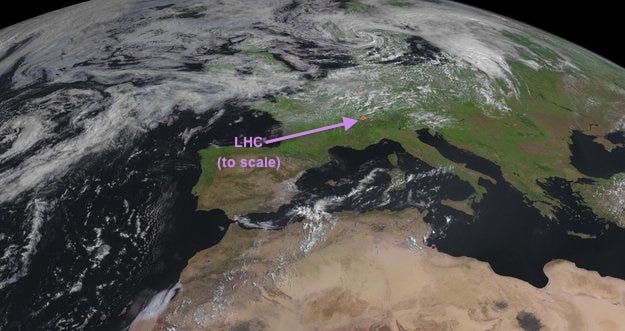
Which means, even with today’s current magnet technology (the same magnets being used at the LHC), we could reach energies of about 20.7 PeV, or 20,700 TeV! (Remember, the LHC is only 13 TeV.) And if we improve on existing electromagnet technology, that number only goes higher.
Worried about the political hurdles? Worried about our seismically-active planet? Think the space-based option is too risky? No problem, just find a seismically quiet rock nearby, and build a circular ring on that. Know of any candidates?

With a radius of 1738 km around its equator, the Moon is a great place to build a particle accelerator! We’re still talking many PeVs (about 6) of energy using today’s magnet technologies, or nearly a factor of 1,000 more into the energy frontier. The formula for any proton-proton (or proton-antiproton) accelerator is simple: multiply your radius in km by your magnetic field in Tesla, then multiply the whole thing by 0.4, and you’ve got your accelerator’s maximum energy in TeV.
Think about your own dream machine; imagine building one a light-year in radius, we’d be able to test inflation and grand unified theories directly!
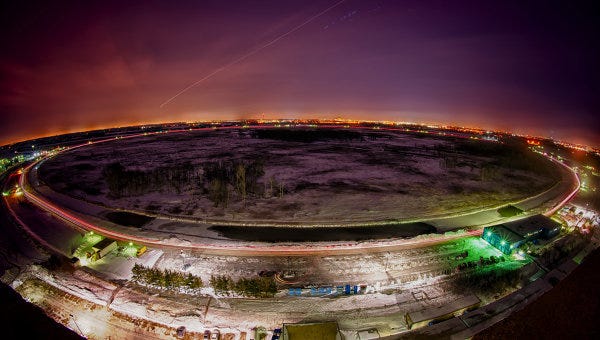
You can tell me all the reasons this won’t happen, can’t happen, or shouldn’t happen, but at the end of the day, there’s only one reason it hasn’t happened already: money. We have the technology to do it right now, among many other things. The only thing stopping us is ourselves. If we don’t build more powerful accelerators, all we can do to probe the energy frontier is hope for cosmic rays to hit us.
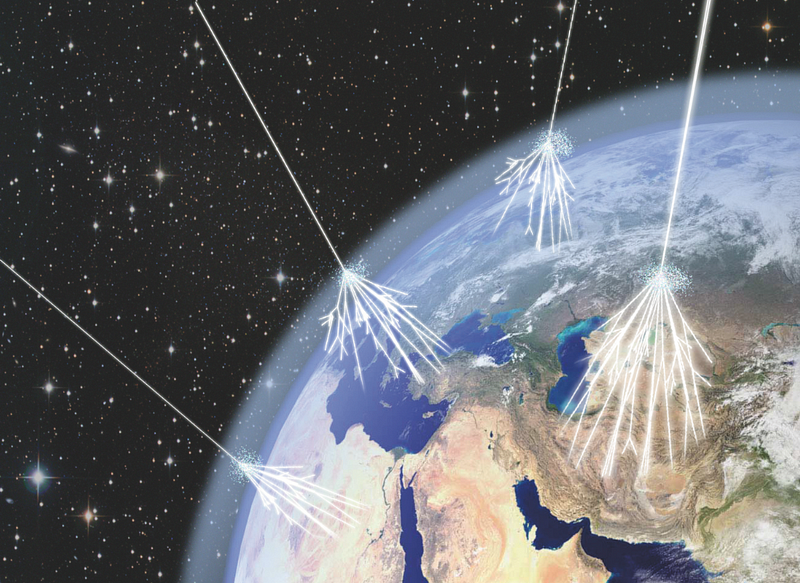
So dream big. The Universe is ours to discover; we just have to make it happen.
It’s the ultimate dream machine for high-energy physicists everywhere.
Drop us a comment on our forum, and support Starts With A Bang on Patreon!





